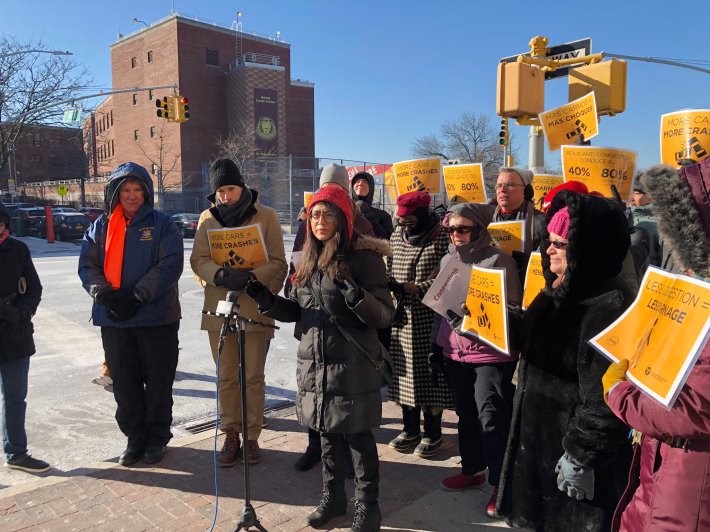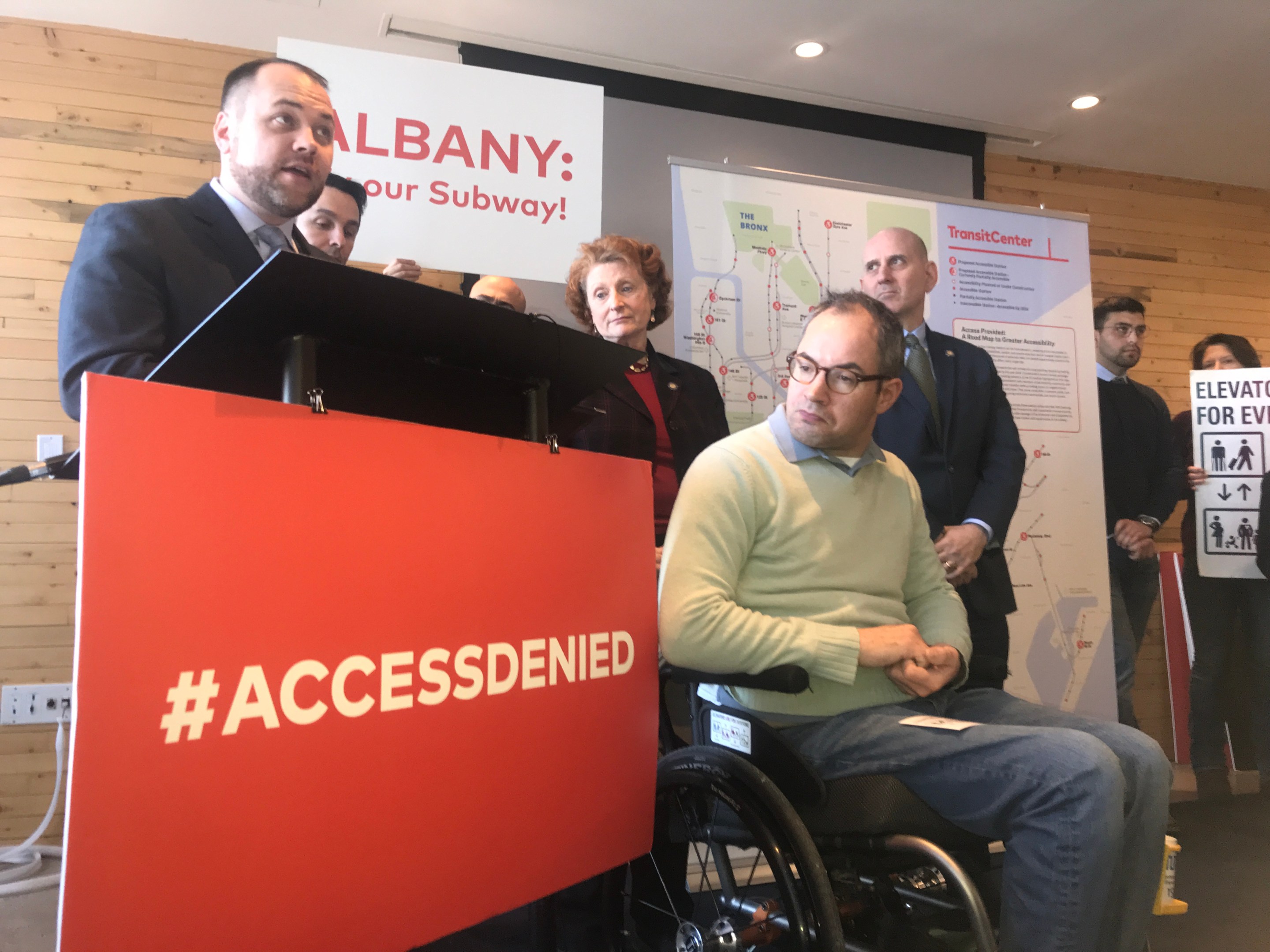Advocacy groups on Thursday offered straggling legislators two more reasons to support tolling drivers to enter Manhattan's central business zone: The money would fund improvements to disabled transit riders while also making roadways safer for pedestrians and cyclists.
In a pair of rallies with local elected officials, TransitCenter and Transportation Alternatives highlighted the additional benefits of Gov. Cuomo's push to raise transit revenue through congestion pricing beyond merely creating an estimated $15 billion per year for major capital improvements by the MTA.

Improved accessibility is a critical part of New York City Transit President Andy Byford's "Fast Forward" plan, which aims to add 50 accessible subway stations to the system in the next five years — up from 100 or so today — and make the system fully accessible by 2034.
The overall cost of Fast Forward has been estimated at $40 to $60 billion.
Advocates fear that accessibility — which has risen to the top of the agenda in the days since a young mother died in a fall at a Midtown station that lacked an elevator — will be jettisoned if the governor and state lawmakers don't come up with all the money to fund it.
"In a competition for limited transit money, accessibility is the first thing they cut," said Colin Wright, who oversees the TransitCenter's ongoing "Access Denied" campaign. "Malaysia Goodson's death shows us that accessibility is not just nice to have, but essential."
Wright and other advocates released a map highlighting the 50 stations that need to be renovated first — and it differs from the MTA agenda. Transit Center said it chose stations for accessibility improvements based on criteria that included location (major express stations and transfer points to subway and bus routes were the highest priority); population demographics (stations near high populations of low-income and disabled residents); current demand (as determined by Access-A-Ride usage data); and finally the appeal of the destination (stations serving universities, business improvement districts, museums and parks, senior centers, hospitals, and naturally occurring retirement communities earned extra points).
"Accessibility is a human right," said Council Speaker Corey Johnson, who joined Transit Center at its press conference on Thursday. "Malaysia Goodson's death struck a nerve with everybody. ... The idea that parents or people with disabilities have to rely on serendipity or the kindness of strangers to navigate mass transit reminds me of stories we see all too often about people who set up GoFundMe accounts to pay off medical expenses. It shows me what is wrong with our society right now. That's why I strongly support Fast Forward."

Meanwhile in Queens, a cold band of advocates heralded safety improvements that could result if congestion pricing passes.
Members of Transportation Alternatives, Families for Safe Streets and Make Queens Safer rallied on Northern Boulevard, not only because it earned the gruesome nickname, "The New Boulevard of Death," based on its eight pedestrian deaths and hundreds of injuries since 2012, but because its location has made it a speedway for motorists, many of whom might not be using the roadway if congestion pricing passes.
"We need congestion pricing for the safety of the over 12,000 children who go to school on Northern Boulevard every day," said State Senator Jessica Ramos. "It is simple: fewer cars means fewer crashes and lives saved."
According to Transportation Alternatives, total crashes fell by 40 percent, and the bicyclist crash rate fell by 80 percent, after congestion pricing was enacted in London.






